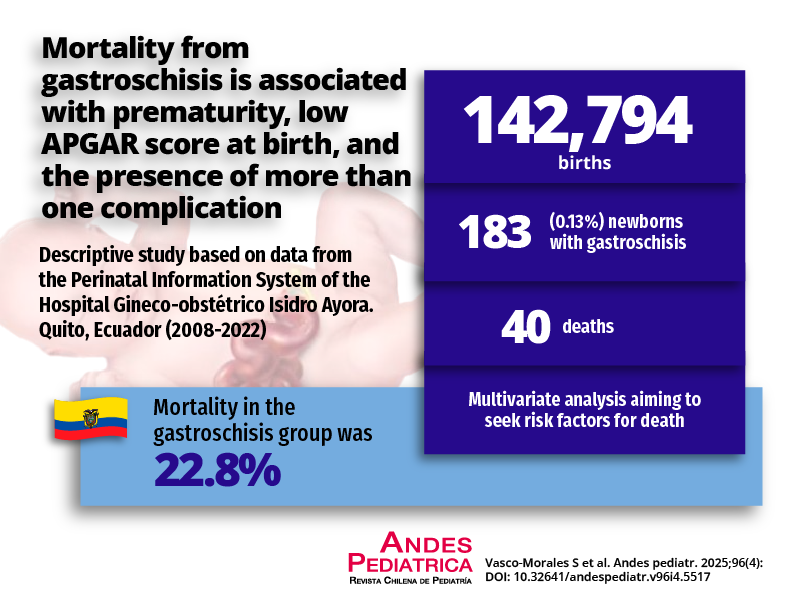Abstract
Gastroschisis is a congenital defect characterized by the protrusion of abdominal viscera through a paraumbilical opening.
Objective: To determine the frequency of gastroschisis and describe variables associated with neonatal mortality.
Patients and Method: A cross-sectional study based on data from the Perinatal Information System of the Hospital Gineco Obstétrico Isidro Ayora (2008–2022). Sociodemographic, obstetric, and neonatal variables were analyzed using Bayesian tests for contingency tables, logistic regression, and the Bayesian t-test analog.
Results: A total of 175 neonates were included (58.9% female). The frequency of gastroschisis was 0.13% (95% CI: 0.11–0.15), with a mortality rate of 22.8%. There was a negative association with gestational age (OR: 0.65; 95% CI: 0.49–0.85) and calendar year (OR: 0.79; 95% CI: 0.68–0.91), indicating lower mortality with each additional week of gestation and over time. The presence of ≥2 complications (OR: 3.46; 95% CI: 1.30–7.12) and Apgar score < 7 at five minutes (OR: 3.12; 95% CI: 1.01–60.91) were positively associated with mortality. Deceased neonates had lower birth weight (2,003.6g versus 2,316.7g; BF10=35.2) and shorter hospital stay (20.9 days versus 34.5 days; BF10=204).
Conclusions: Gastroschisis showed a high frequency, with mortality associated with multiple complications, low Apgar scores, and low birth weight, while higher gestational age and advances in clinical management over the years were associated with a lower fatal risk. The need for a multidisciplinary approach to improve neonatal outcomes in this population is emphasized.

This work is licensed under a Creative Commons Attribution 4.0 International License.
Copyright (c) 2025 Revista Chilena de Pediatría






